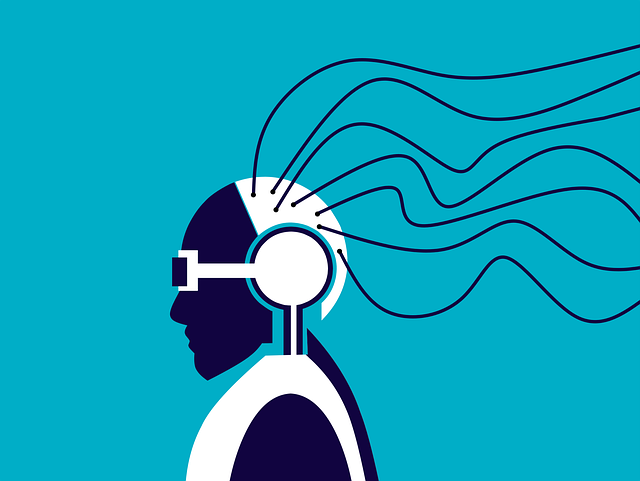Prosthetic technology is advancing at a rapid pace, and the lines between prosthetics, robotics, and exoskeletons are beginning to blur. Traditional prosthetic limbs are evolving beyond passive replacements and becoming active, robotic-powered devices that enhance mobility and strength. At the same time, exoskeletons, originally designed for rehabilitation and industrial support, are now integrating with prosthetic technology, providing users with more control, endurance, and freedom than ever before.
At Robobionics, we are committed to pushing the boundaries of prosthetic innovation, ensuring that users have access to cutting-edge, high-performance mobility solutions. In this article, we will explore how robotics and exoskeletons are merging with prosthetic technology, shaping the future of bionics, rehabilitation, and mobility from 2025 to 2030.
1. The Evolution of Prosthetics: From Passive to Active Devices
Prosthetic limbs have traditionally been passive, meaning they require the user’s body movement or external force to function. However, with the integration of robotic technology, prosthetic limbs are now becoming fully active and responsive, giving users greater independence and control.
Modern robotic prosthetics use advanced sensors, artificial intelligence (AI), and actuators to mimic natural limb movement. These devices read muscle signals and nerve impulses, allowing users to move their prosthetic arms and legs with precision. Some advanced models even feature adaptive grip strength, enabling users to handle fragile objects or apply force when needed.
By 2030, robotic prosthetics will become more intuitive and lifelike, responding in real-time to the user’s movement, reducing fatigue, and improving balance and functionality. This shift from passive limbs to AI-driven prosthetics is setting the stage for the next big leap: the integration of exoskeleton technology.
2. The Role of Exoskeletons in Enhancing Prosthetic Functionality
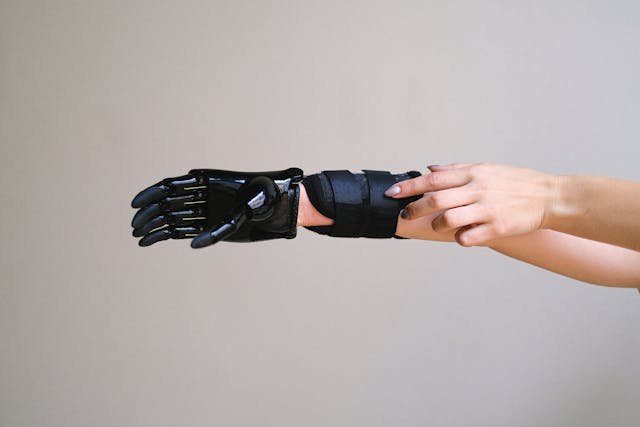
Exoskeletons were originally developed for military applications and industrial work, providing users with extra strength and endurance. However, these wearable robotic frames are now being customized for amputees, fusing with prosthetic technology to enhance mobility and control.
A lower-limb prosthetic user, for example, might struggle with balance or walking long distances. By incorporating exoskeleton support, the prosthetic limb can be reinforced with motorized assistance, helping users walk with less effort, climb stairs more easily, and reduce strain on their bodies.
By 2030, exoskeleton-enhanced prosthetics will allow double amputees and individuals with limited mobility to perform previously impossible tasks, such as running, carrying heavy loads, or even navigating uneven terrain with ease.
3. AI-Driven Robotics: Creating Smarter, More Adaptive Prosthetic Systems
Artificial Intelligence is playing a huge role in the development of robotic prosthetics and exoskeletons, making them smarter and more adaptable to real-world environments.
AI-powered prosthetics use machine learning algorithms to analyze a user’s movement, muscle activity, and terrain conditions in real time. This allows prosthetic limbs to adjust their grip strength, walking speed, or balance automatically. Similarly, AI-driven exoskeletons help reduce fatigue and optimize energy use, making mobility more natural and effortless.
By 2030, AI-integrated prosthetics and exoskeletons will learn from their users, improving performance over time and offering greater stability, responsiveness, and comfort for everyday activities.
4. Brain-Machine Interfaces: Controlling Prosthetic Limbs with Thought
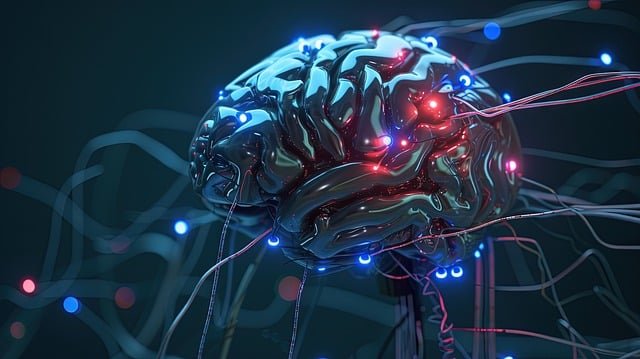
One of the most groundbreaking advancements in robotic prosthetics is the development of brain-machine interfaces (BMIs), which allow users to control prosthetic limbs and exoskeletons using only their thoughts.
BMIs work by detecting electrical signals from the brain or nervous system and converting them into commands that control the prosthetic limb or exoskeleton. This means that, instead of using buttons, levers, or manual controls, users can move their prosthetic hand, bend their knee, or walk forward just by thinking about it.
By 2030, brain-controlled prosthetics will be widely available, allowing for seamless communication between the nervous system and artificial limbs, making movements more fluid and intuitive.
5. Wearable Robotics for Upper-Limb Prosthetic Users
While robotic lower-limb prosthetics are helping individuals walk more naturally, upper-limb prosthetic users are also benefiting from wearable robotics that enhance grip strength, precision, and endurance.
Robotic gloves and arm exoskeletons can be worn alongside bionic hands to provide extra strength and stability. For example, a user with limited grip force can wear a robotic glove that amplifies their hand movement, allowing them to hold heavier objects or perform delicate tasks like writing, cooking, or playing an instrument.
By 2030, wearable robotic systems for upper-limb amputees will offer enhanced dexterity and fine motor control, giving users greater independence in daily activities.
6. The Role of Soft Robotics in Prosthetic Comfort and Adaptability
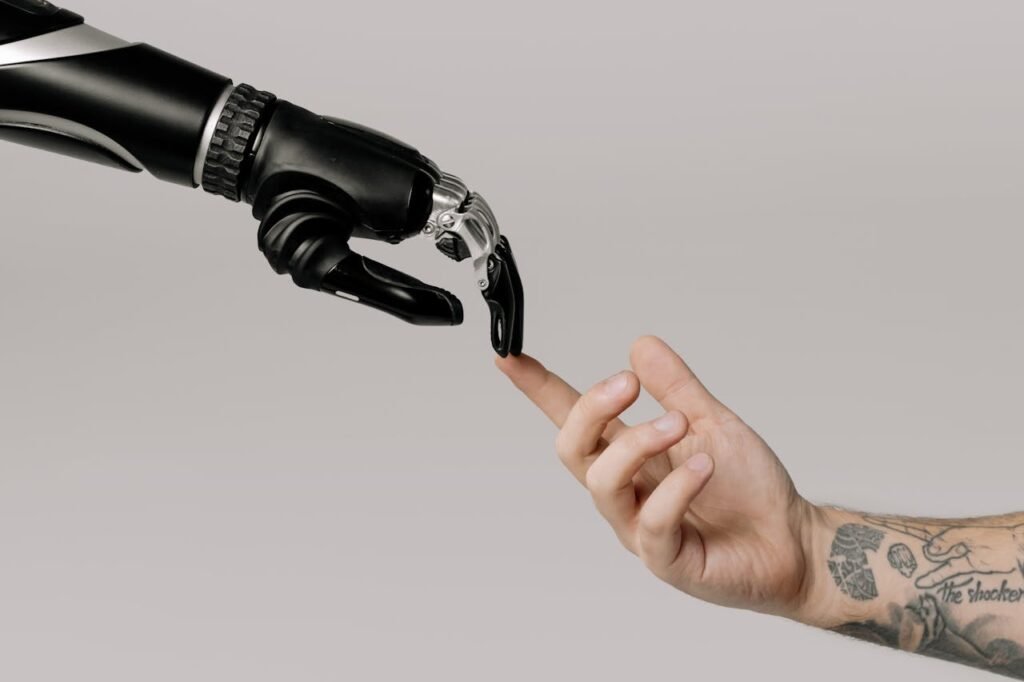
One challenge of robotic prosthetics is that traditional materials can be rigid and uncomfortable. Soft robotics is addressing this issue by creating prosthetic limbs and exoskeletons that are flexible, lightweight, and more comfortable for long-term use.
Soft robotic components are made from silicone, bio-inspired materials, and lightweight actuators, allowing prosthetic limbs to bend, twist, and move more naturally. These materials also reduce pressure on the skin, preventing discomfort and irritation for long-term prosthetic users.
By 2030, soft robotics will make prosthetic technology more adaptable, ensuring that users experience maximum comfort without sacrificing strength or functionality.
7. The Future of Hybrid Prosthetic-Exoskeleton Systems
The next major breakthrough in prosthetic technology will be fully integrated hybrid systems, where prosthetic limbs and exoskeletons function as one seamless unit.
Instead of using a separate prosthetic limb and an exoskeleton for support, future designs will combine the two technologies into a single wearable robotic system. This will allow for real-time energy redistribution, improved weight balance, and enhanced movement efficiency.
By 2030, hybrid prosthetic-exoskeleton systems will enable users to walk longer, lift heavier objects, and move more fluidly than ever before, bringing bionic mobility closer to reality.
8. The Impact on Rehabilitation and Long-Term Mobility
Robotic prosthetics and exoskeletons are not just improving daily mobility—they are also revolutionizing rehabilitation for people recovering from injuries, surgeries, or paralysis.
Exoskeleton-assisted rehabilitation programs help train muscles, rebuild coordination, and prevent muscle atrophy. For new prosthetic users, these systems allow for faster adaptation by offering real-time feedback and movement correction.
By 2030, AI-driven rehabilitation exoskeletons will be widely available in hospitals, physiotherapy centers, and even home-based recovery programs, ensuring that users can regain mobility more effectively.
9. The Role of Robotics in Prosthetic Personalization

One of the biggest challenges in prosthetic technology has been customizing artificial limbs to fit each user’s unique needs. With the integration of robotics and AI, prosthetic limbs are becoming highly personalized, adapting to movement patterns, strength levels, and comfort preferences.
Modern robotic prosthetics are equipped with adaptive algorithms that track how a user moves, adjusting joint resistance, grip strength, and weight distribution in real-time. This allows for a prosthetic limb that continuously evolves, improving efficiency as the user’s body adapts to the device.
By 2030, robotic prosthetic systems will be completely user-specific, with machine learning analyzing past movement data to predict and optimize future motion, making mobility smoother and more natural.
10. Smart Sensors and Haptic Feedback: Restoring the Sense of Touch
One of the most exciting advancements in robotic prosthetics is the introduction of haptic feedback systems that aim to restore the sense of touch.
Traditional prosthetics offer little to no sensory feedback, meaning users have to rely solely on visual cues to gauge how much force they are applying. With robotic advancements, smart sensors placed in prosthetic fingers, hands, or feet can detect temperature, pressure, and texture, sending real-time signals back to the brain.
By 2030, users will be able to feel the difference between holding a delicate object like a piece of paper and gripping something heavy like a suitcase, making prosthetic limbs more intuitive and functional in everyday life.
11. Robotics in Lower-Limb Prosthetics: The Future of Walking and Running

For amputees using lower-limb prosthetics, robotics is making it possible to walk, run, and climb with greater stability and efficiency.
Robotic prosthetic legs are integrating AI-powered balance control, automatic shock absorption, and terrain adaptation to improve movement. Sensors detect whether a user is walking on pavement, sand, or stairs, and adjust the limb’s flexibility and impact resistance accordingly.
By 2030, advanced robotic prosthetic legs will allow users to move as naturally as biological limbs, making it easier for individuals to engage in sports, outdoor activities, and long-distance walking with minimal strain.
12. The Role of Robotics in Pediatric Prosthetics
Children who use prosthetic limbs often face unique challenges, as they outgrow their devices quickly and require frequent adjustments. Robotics is helping solve this issue by creating adaptive pediatric prosthetics that grow with the child.
These new prosthetic limbs are built with modular robotic components that can be adjusted as the child’s body develops. AI-driven software tracks growth patterns and muscle development, allowing for automatic modifications to fit and flexibility without requiring frequent replacements.
By 2030, robotic pediatric prosthetics will ensure that children never feel restricted by outdated devices, giving them the freedom to run, play, and move just like their peers.
13. Full-Body Robotic Support: The Rise of Exoskeleton-Prosthetic Hybrids
The combination of robotic prosthetics and full-body exoskeletons is creating hybrid mobility solutions for people with multiple limb amputations or severe mobility impairments.
These robotic systems distribute energy evenly across the body, allowing users to walk, lift objects, or stand for long periods without excessive strain. The integration of neural interfaces ensures that movements feel natural and coordinated, reducing fatigue and discomfort.
By 2030, exoskeleton-prosthetic hybrid systems will provide a level of mobility never seen before, allowing users to regain independence in both professional and personal life.
14. The Impact of Robotics on Prosthetic Affordability and Accessibility
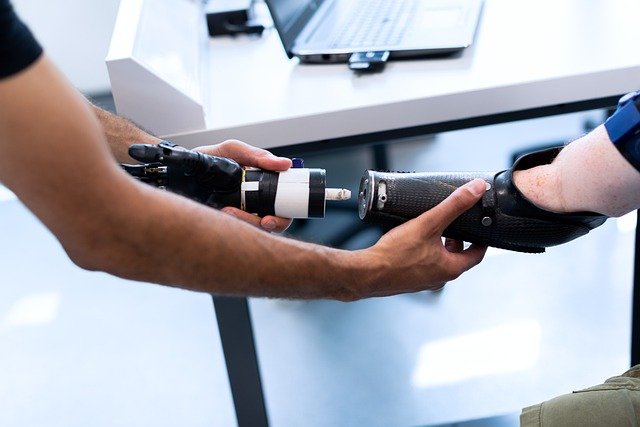
One of the biggest barriers to advanced prosthetic technology is cost. Robotic prosthetics, though highly functional, have traditionally been expensive and difficult to access. However, AI-driven automation and 3D printing are making robotic prosthetics more affordable and widely available.
Manufacturers are now using cost-effective robotic components and open-source AI software to reduce production costs while maintaining high performance. This means that, by 2030, even people in developing countries will have access to high-quality, robotic-enhanced prosthetics at an affordable price.
At Robobionics, we are working on making next-generation prosthetics accessible to everyone, ensuring that no one is left behind due to financial constraints.
15. The Future of Robotics in Prosthetic Sport and High-Performance Athletics
Athletes with prosthetic limbs are pushing the limits of human performance, and robotic technology is giving them an unprecedented competitive edge.
Sports prosthetics now include spring-loaded robotic legs that provide better propulsion, AI-powered grip adjustments for upper-limb athletes, and exoskeleton-enhanced training programs to improve endurance and reaction speed.
By 2030, robotic prosthetics will be fully customizable for each sport, ensuring that athletes can compete at their highest level without limitations. This will blur the boundaries between natural and artificial performance, proving that robotic technology can help individuals achieve extraordinary feats in professional sports.
16. Robotics in Prosthetic Rehabilitation: Faster, Smarter Recovery
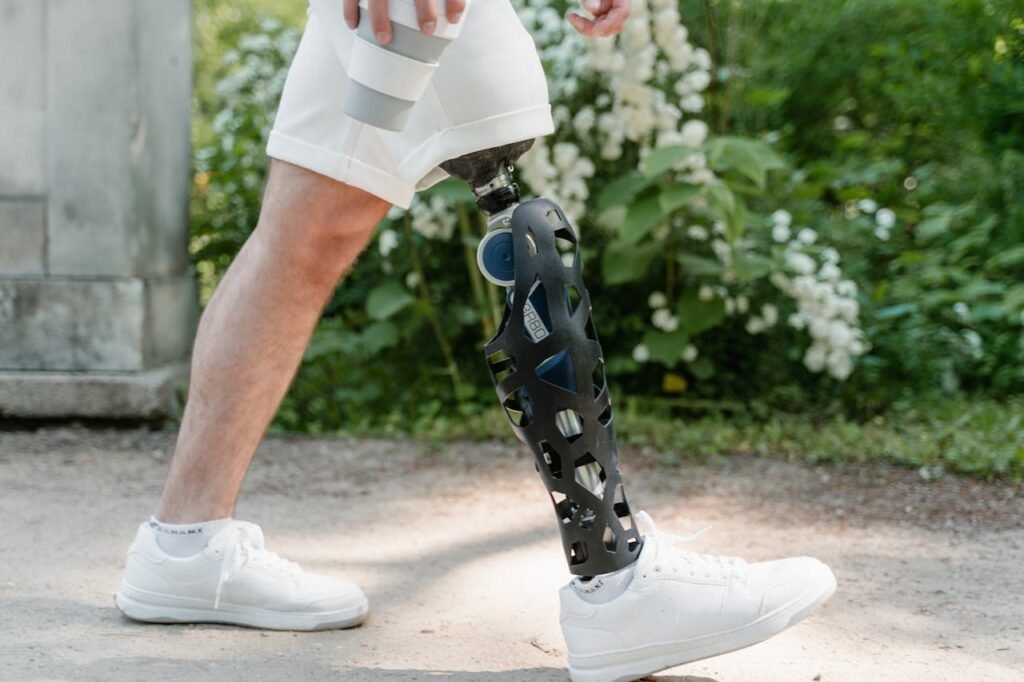
Rehabilitation after limb loss can be physically and emotionally challenging, but robotic prosthetics are transforming the recovery process.
AI-powered rehabilitation exoskeletons help users retrain their muscles, correct posture, and gradually rebuild strength, reducing the risk of long-term mobility issues. Robotic rehabilitation systems also provide real-time feedback, allowing therapists to track progress and customize recovery plans.
By 2030, robotic rehabilitation prosthetics will allow users to recover faster, regain confidence, and experience a smoother transition to long-term prosthetic use.
17. The Future of Bionic Limbs: Merging Robotics with Human Biology
As robotics continue to evolve, scientists are exploring the possibility of merging artificial limbs with biological functions. This means that future robotic prosthetics won’t just replicate movement—they will also integrate with the human body at a cellular level.
Researchers are developing prosthetic limbs that connect directly to the nervous system, allowing for full sensory and motor control. Some futuristic designs even explore biological-mechanical fusion, where artificial muscles and robotic components work together to create a limb that feels truly natural.
By 2030, robotic prosthetic limbs will no longer feel separate from the body—they will function as true extensions of human biology, creating a seamless blend between man and machine.
Final Thoughts: A Future of Seamless Integration Between Robotics and Prosthetics
The merging of robotics, exoskeletons, and prosthetic technology is creating a new era of mobility, where artificial limbs are not just functional replacements but intelligent, adaptable extensions of the human body.
At Robobionics, we are committed to integrating robotic advancements into prosthetic design, ensuring that users benefit from the latest innovations in AI-driven movement, soft robotics, and brain-controlled prosthetic technology.
If you’re ready to experience the next generation of prosthetics, book a free demo with Robobionics today and take the first step toward a smarter, more advanced mobility solution!



